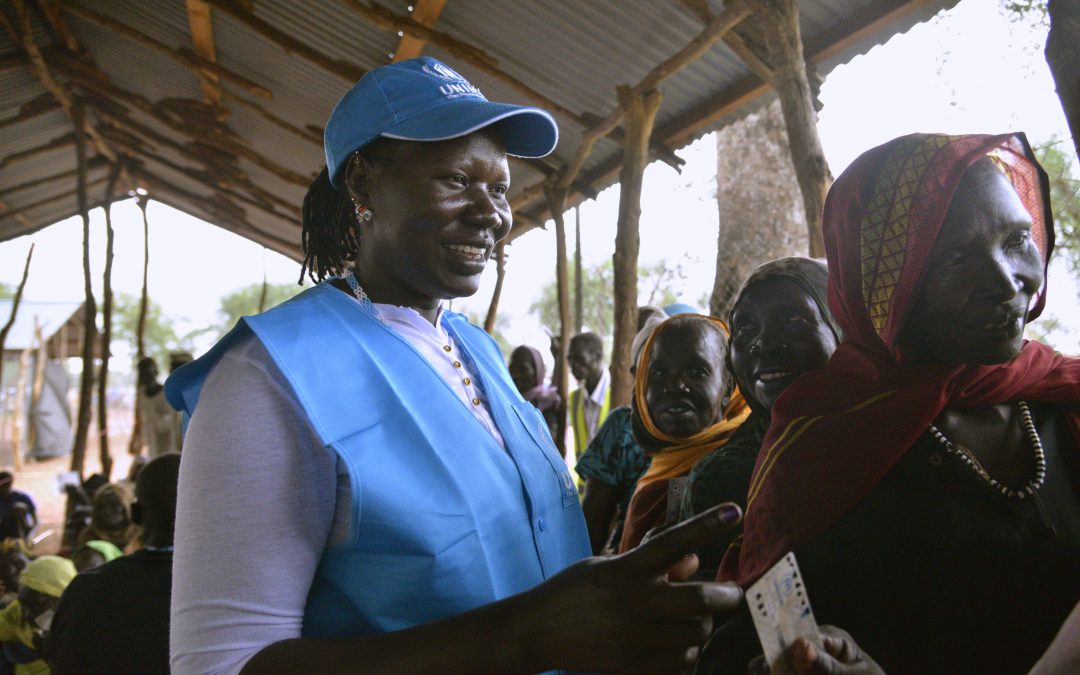In order to support UNHCR Field operations and other humanitarian response organisations undertake Information and Communication Needs Assessments, UNHCR Innovation Service has developed a ‘question bank’ on Information and Communication Needs that can be downloaded, adapted and deployed by operations across a number of mobile data collection tools. This tool is built on the work undertaken on Information and Communication Needs Assessments by actors such as the CDAC Network and ACAPS, Internews et al detailed in this blog.
The tool has been created as an XLSForm stored on Google Drive. An XLSForm is a standard form created to help simplify the authoring of forms in Excel, it can be uploaded into numerous mobile data collection platforms. For more information on XLSForms see the XLSForm Website. Our tool is stored publicly on Google Drive and is accessible here.
It contains over 100 questions that cover aspects from baseline demographic information to channel access, specific questions on radio/cellular/face-to-face communications, to questions around communication modalities with humanitarian responders and much more.
It is important to note his tool is not designed to be deployed without modification or amendment. It should be used as a basis for an assessment and customised to a specific context/situation. As such, the questions serve as a guide to ensure key areas of enquiry are addressed. It is currently designed to support either Focus Group Discussions or Key Information Interviews and is not intended for direct completion by community members, but for completion by field staff engaging with community members directly. More guidance on how to use the tool can be found in the ‘README‘ section of the spreadsheet.
For information on the theoretical background, history and narrative of the tool and Information and Communication Needs Assessments more broadly read our recent blog post ‘Understanding Information Ecosystems: Making it happen’.
Open the Information and Communication Needs Assessment Tool
Quick Start Guide
The tool has been designed for simplicity and as such it should be possible to start using it relatively quickly, deploying a form in a manner of minutes. The following three videos below were each recorded in one take and demonstrate how to access the tool, download and amend the form as necessary to suit your context, and how to deploy it through Kobo Toolbox. A more detailed guide to use can be found within the ‘README’ page of the tool itself.
A knowledge of XLSForms and associated syntax is beneficial but not required. Some basic knowledge of Kobo Toolbox is required. For more information on how to use Kobo Toolbox, check out their support materials. For Kobo Toolbox, set-up a free account at http://kobo.unhcr.org and follow the on-screen instructions.
1. Download
While the tool is stored publically, it has restricted access to ensure quality control. The first step is to download a copy of the latest form to your local machine and open in Excel or other spreadsheet software. As noted above it is essential to review the README information as a first step to take note of the latest changes to the tool and understand the conditions for use etc.
2. Prepare
There are two stages at which you can modify and amend the form for your needs/context. The first is within the XLSForm as it’s downloaded, the second is within the Kobo Toolbox system. At this stage you can make amendments and edits to the XLSForm (using the relevant syntax) as desired. Prior to upload into Kobo you will need to delete the ‘README’ sheet.
3. Deploy
Using the function within Kobo Toolbox, upload the form and preview it to ensure there are no errors. Upon successful upload, you can amend as necessary using the Kobo Toolbox interface. Once the form is finalised you can deploy the form and undertake the assessment using either web-based forms or through the KoboCollect Mobile App.
Future Developments
The tool has been constructed in such a way that we hope to continue improving it, enhancing its relevance for humanitarian staff undertaking these assessments in the field. All information on release versions, including a changelog, will be provided in the Google Sheet ‘README’ file. These updates will be based on feedback received from users, analytics and specific requests from UNHCR field operations. Such improvements could include additional languages, specific questions for different groups/audiences and supporting tools for visualisation.
Feedback and Getting Involved
UNHCR Innovation Service is committed to transparency and collaboration. We want to keep continually improving and develop this and other tools further and welcome any feedback, or contributions that you might have. Please let us know via the ‘Rate Us’ section of the website.
We’re always looking for great stories, ideas, and opinions on innovations that are led by or create impact for refugees. If you have one to share with us send us an email at [email protected]
If you’d like to repost this article on your website, please see our reposting policy.

